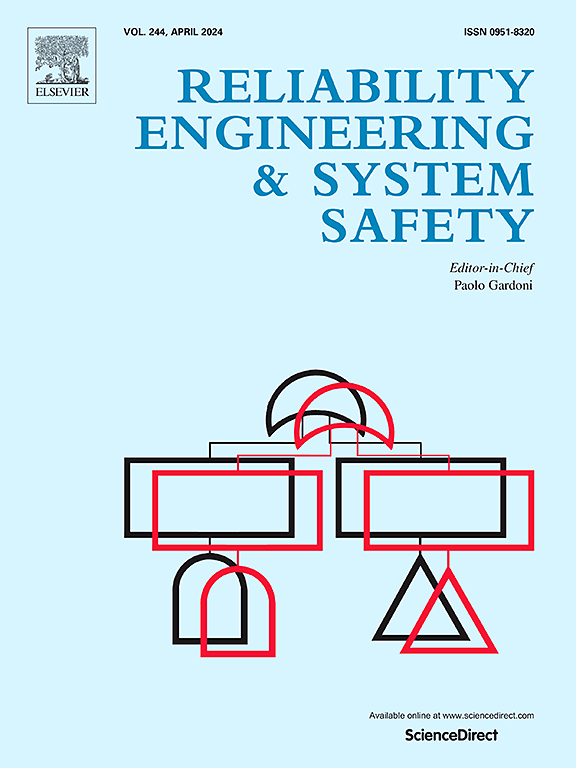Surrogate modeling for probability distribution estimation: Uniform or adaptive design?
IF 9.4
1区 工程技术
Q1 ENGINEERING, INDUSTRIAL
引用次数: 0
Abstract
The active learning (AL) technique, one of the state-of-the-art methods for constructing surrogate models, has shown high accuracy and efficiency in forward uncertainty quantification (UQ) analysis. This paper provides a comprehensive study on AL-based global surrogates for computing the full distribution function, i.e., the cumulative distribution function (CDF) and the complementary CDF (CCDF). To this end, we investigate the three essential components for building surrogates, i.e., types of surrogate models, enrichment methods for experimental designs, and stopping criteria. For each component, we choose several representative methods and study their desirable configurations. In addition, we use a uniform design based on maximin-distance criteria as a baseline for measuring the improvement of using AL. Combining all the representative methods, a total of 1920 UQ analyses are carried out to solve 16 benchmark examples. The performance of the selected strategies is evaluated based on accuracy and efficiency. In the context of full distribution estimation, this study concludes that (i) The benefit of using AL is lower than expected and varies across different surrogate models, with three reasons for this performance variability analyzed in detail. (ii) Detailed recommendations are provided for the three surrogate components, depending on the features of the problems (especially the local nonlinearity), target accuracy, and computational budget.
求助全文
约1分钟内获得全文
求助全文
来源期刊

Reliability Engineering & System Safety
管理科学-工程:工业
CiteScore
15.20
自引率
39.50%
发文量
621
审稿时长
67 days
期刊介绍:
Elsevier publishes Reliability Engineering & System Safety in association with the European Safety and Reliability Association and the Safety Engineering and Risk Analysis Division. The international journal is devoted to developing and applying methods to enhance the safety and reliability of complex technological systems, like nuclear power plants, chemical plants, hazardous waste facilities, space systems, offshore and maritime systems, transportation systems, constructed infrastructure, and manufacturing plants. The journal normally publishes only articles that involve the analysis of substantive problems related to the reliability of complex systems or present techniques and/or theoretical results that have a discernable relationship to the solution of such problems. An important aim is to balance academic material and practical applications.
 求助内容:
求助内容: 应助结果提醒方式:
应助结果提醒方式:


